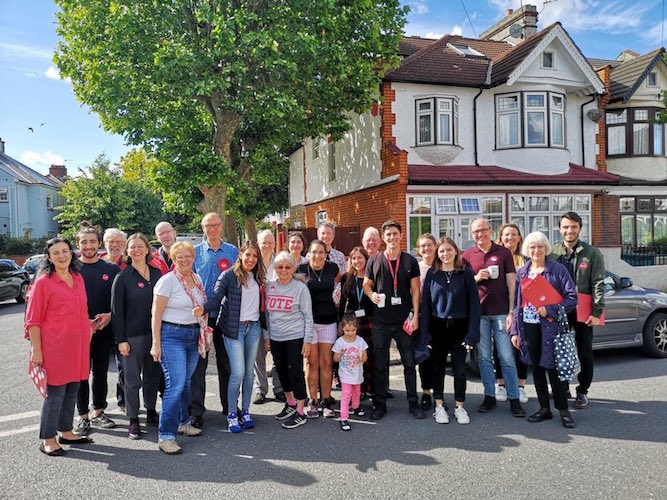It is unusual for a Wandsworth election to play second fiddle to a Merton one, but that was the case for the two London wards that had by-elections on 20 June. The result in Cannon Hill in the latter borough was particularly important and interesting, with the Liberal Democrats taking a seat off Labour. But although the outcome in Wandsworth’s Furzedown ward was less florid, it still provided another indication of rising Lib Dem fortunes in south west London.
Furzedown is in the south east corner of the borough, where Tooting shades into Streatham. It is a clearly-drawn ward, delineated on two sides by the boundary with Lambeth, on a third by Tooting Bec Common and on the fourth by a railway line. Mitcham Lane runs through the ward and leads to Streatham Common, which is where the nearest station for many residents is.
Its streets are an irregular grid of straight residential roads, mostly Victorian and Edwardian terraces with the occasional inter-war area. It is majority owner-occupied (53 per cent, nowhere near as much as Cannon Hill) and has a predominantly youthful (median age 33) and ethnically diverse (BAME 43 per cent) population.
When the present Wandsworth boundaries were established in 2002, Furzedown produced very close contests between the two main parties, with representation split between the Conservatives and Labour in the elections of 2002 and 2006. It was also split three times out of four in elections between 1986 and 1998. Furzedown was the ward where the blue line was at its thinnest in the first of those years – the Tories held Wandsworth with 31 councillors to 30 for Labour, and Labour were only 75 votes off getting that all-important Furzedown seat. But the ward swung decisively to Labour in 2010 and has now become the party’s strongest ward in the borough, with 64 per cent of voters giving the party their support in the 2018 elections.
The reasons for this are twofold. One is the fading of the “Wandsworth effect” that gave the Conservatives an unusually strong vote on local issues because of the popularity of their council administration. This bonus had practically disappeared by 2018, and wards like Furzedown were voting much like similar areas in other boroughs. The other is that the southern half of Tooting has followed the general London demographic trend more closely than most of Wandsworth and gained more residents in Labour-voting groups over the years.
This year’s by-election was caused by the resignation of Labour councillor Candida Jones, formerly deputy leader of the Labour Group, who took up a politically restricted job. It was more of a headache for Labour than might have been expected due to the Lib Dem upsurge in this sort of area of London. The Lambeth ward of Thornton, where the Lib Dems nearly gained a Labour seat in April is, after all, separated from Furzedown only by Tooting Bec Common and a couple of railway lines.
The Lib Dems have next to no track record in Wandsworth – it has been even stonier ground than Merton – and out of 906 regular contests for council seats since 1964 the party has won precisely once (Earlsfield, 1982). But all that changed in the last month’s European Parliament election, when the party came from nowhere to top the poll in Wandsworth and quite possibly to “win” every single ward in the borough.
Labour campaigned hard in Furzedown – party membership is high in Wandsworth and at the Tooting end of the borough there is an experienced election-winning machine. They selected a candidate, Graham Loveland, who had strong environmental and pro-European views and a record of local volunteering. This enabled Labour to compete with the Lib Dems on that party’s strongest ground.
Labour’s efforts paid off, with Loveland winning the ward despite a slide in the party’s share of the vote from 64 per cent to 49 per cent (1,811 votes). Lib Dem Jon Irwin came a respectable but distant second (24 per cent, 887 votes). The swing was 17 per cent from Labour to Lib Dem, not much below what it was in Cannon Hill. Labour held Furzedown because the party started so far ahead, not because the Lib Dems were failing to pick up votes. The Conservatives came third, an unusual state of affairs in Wandsworth. Turnout was a reasonable 34 per cent.
We have now had three wards in south west London where the Lib Dems have challenged Labour in by-elections in the last few months. The swing was biggest in Lambeth Thornton, even though the Lib Dems fell just short; the gain of a seat where they had no prior strength makes Merton Cannon Hill particularly significant; Wandsworth Furzedown was Labour’s most resilient performance, but the swing was still large.
There is definitely a pattern here. The trend to the Lib Dems as the party of Remain, so apparent in the European Parliament elections, has started to bleed through into London local government elections in strong Labour seats and Lab-Con marginals alike.
OnLondon.co.uk is dedicated to providing fair and thorough coverage of London’s politics, development and culture. The site depends on donations from readers and is also seeking support from suitable organisations. Read more about that here.

